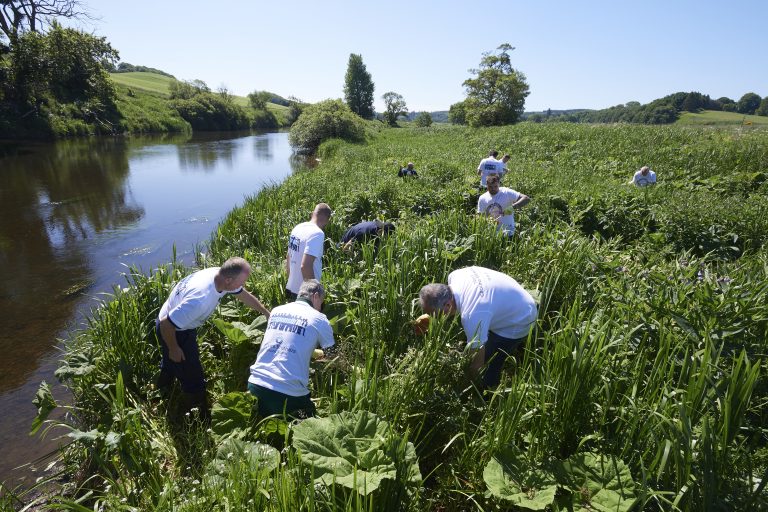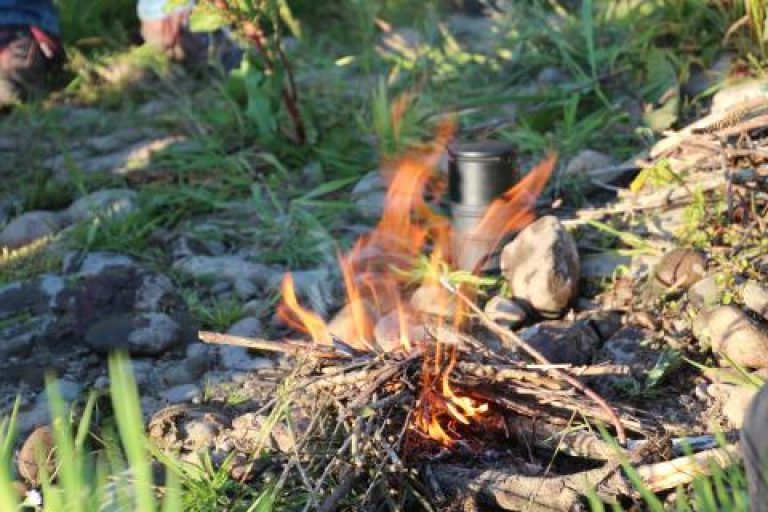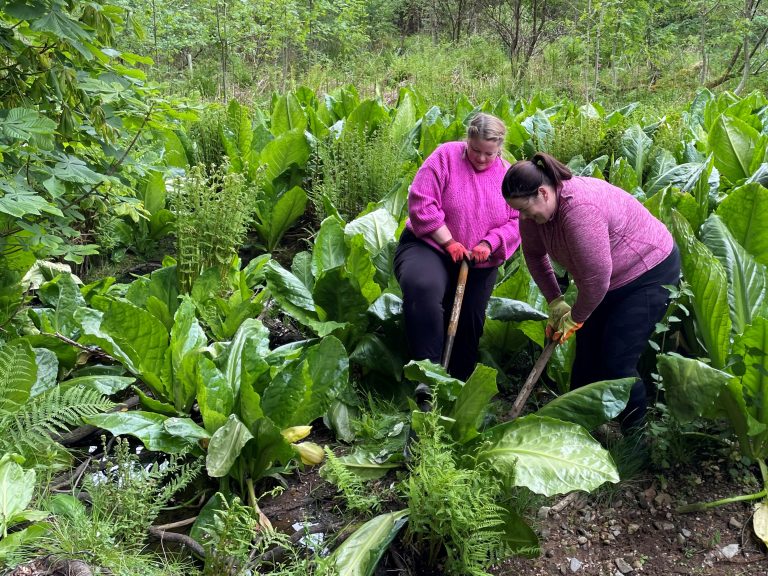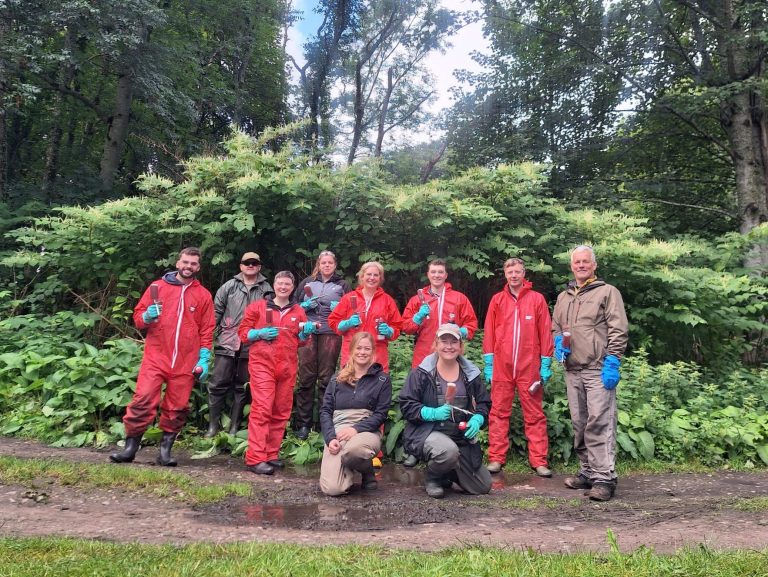Volunteer as a Team
Your team, perhaps a small group of 2-3 or a larger group of up to 15, will carry out practical conservation and environmental work to remove invasive species from the countryside in our Volunteer Conservation Days. These days connect your staff with the local environment and are ideal for building team-working skills and enhancing morale.
Your team will have fun, maybe get a bit muddy, and gain a sense of achievement through doing something worthwhile and knowing they are making a real difference to help Scotland’s wildlife and iconic native species.
Our staff will share their knowledge, understanding and passion of and for the natural world around us. They will engage and inspire your team and connect them to their surroundings and natural environment.








